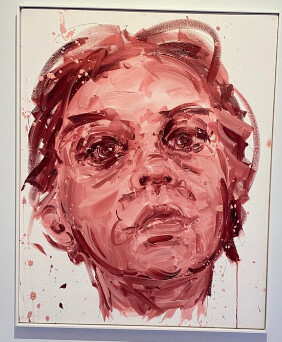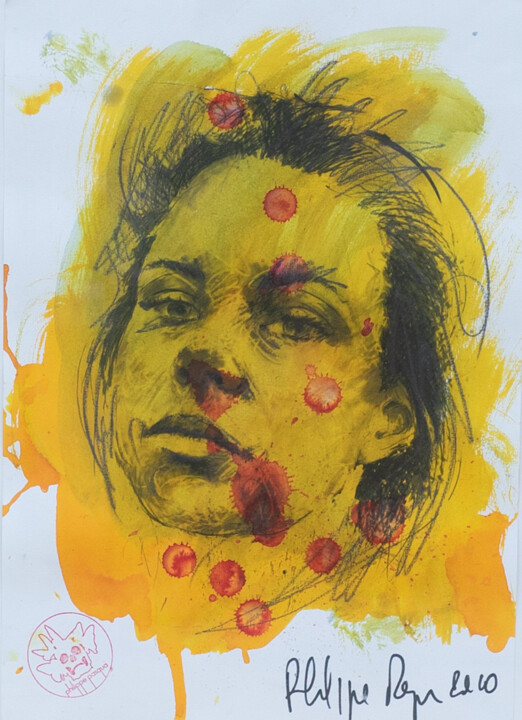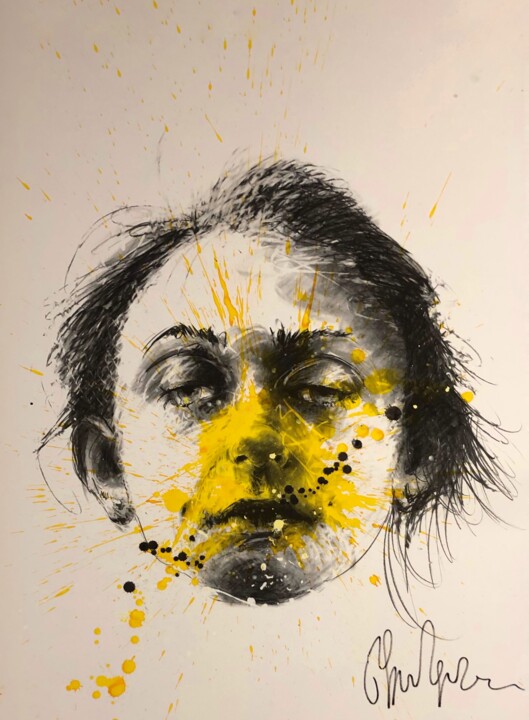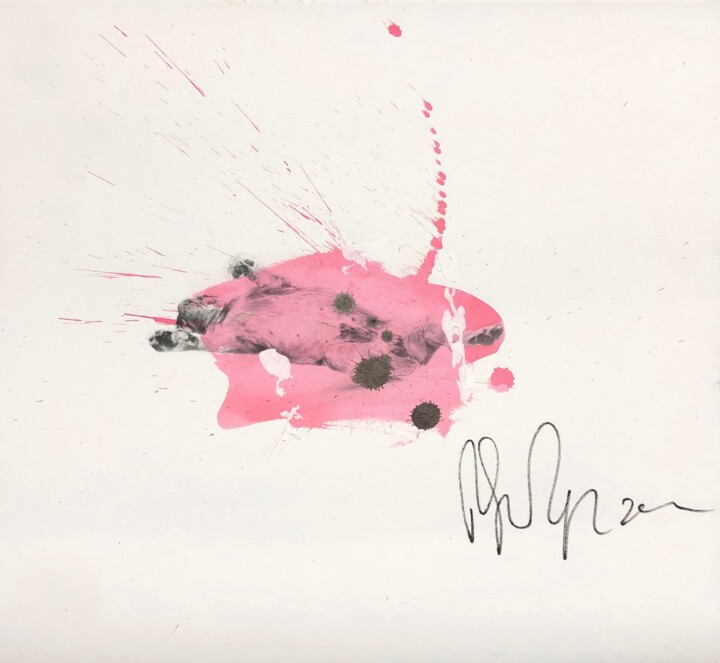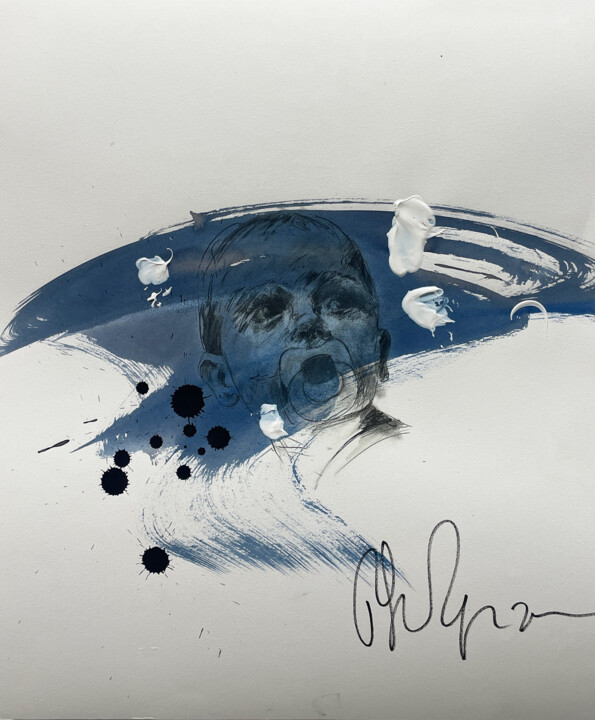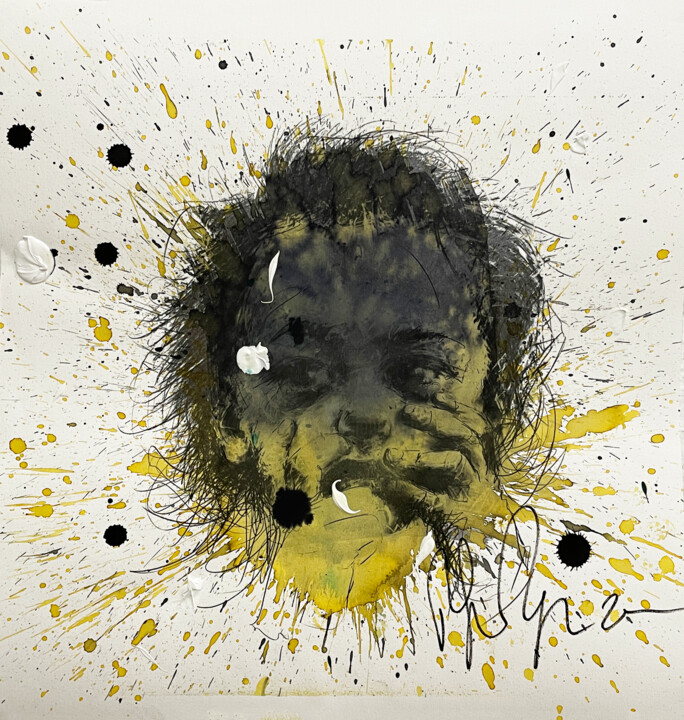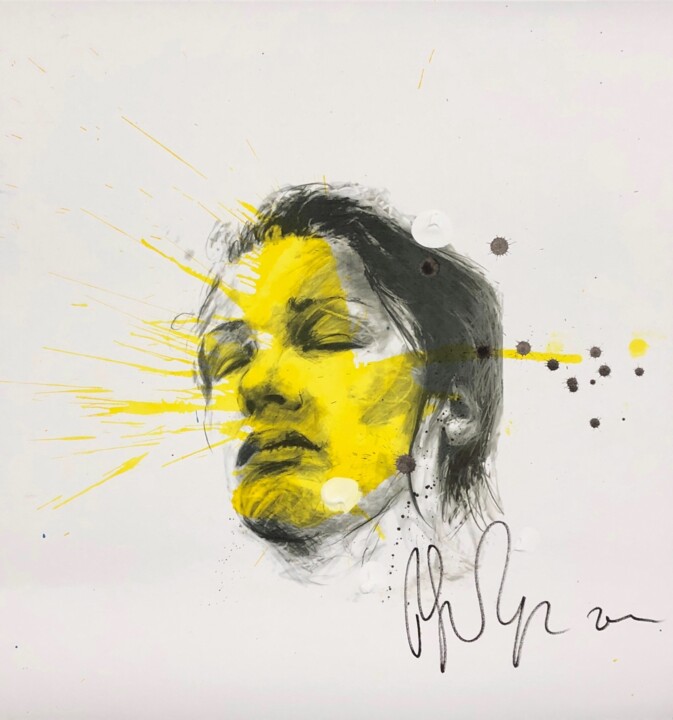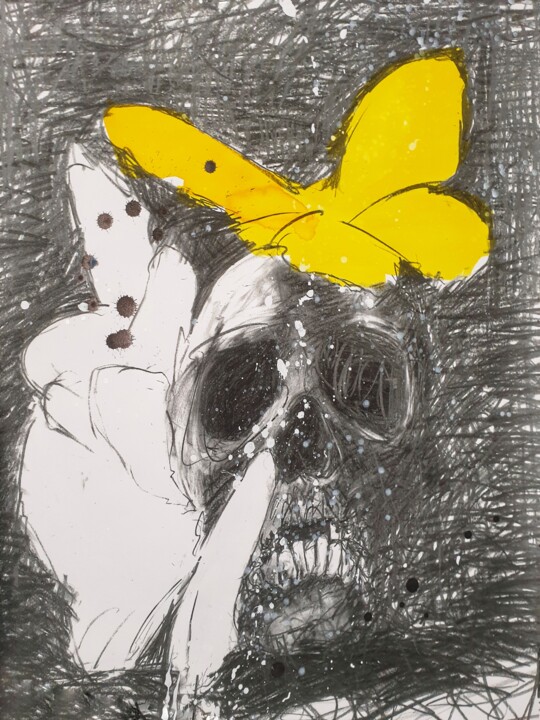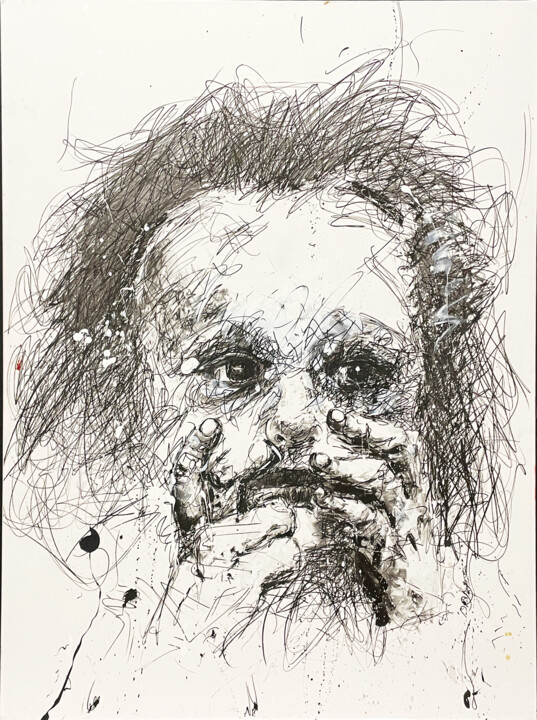Philippe Pasqua
Philippe Pasqua is a contemporary French artist known for his powerful and evocative works that explore themes of identity, beauty, and mortality. Born in Grasse, France, in 1965, Philippe Pasqua moved to Paris in 1975. At around 18, he began painting and later relocated to New York, where he lived for about two years. In 1985, he gained recognition for his paintings featuring fetishes and voodoo-inspired figures, making his gallery debut in 1990.
Within just three years, from 1995 to 1997, Pasqua created approximately a thousand pieces. In 2006, collector and art dealer Jose Mugrabi acquired around a hundred of his works and sought a form of exclusivity on Pasqua's artistic production. Art historian Pierre Restany also took an interest in Pasqua's work, writing about it. In 2011, Pasqua's signature ranked second in Artprice's rankings of French contemporary artists.
For over 20 years, Philippe Pasqua has focused on the human body, head, face, and skull, imbuing his grand-scale paintings with loosely applied, expressive brushstrokes that bring flesh and bone to life. Influenced by Francis Bacon and Lucian Freud, he has emerged as a leading artist of his generation, creating work that both impresses and captivates.
 Philippe Pasqua - Vanité jaune 2 (2010). Pencil / Ink on Paper. 100 x 80 cm.
Philippe Pasqua - Vanité jaune 2 (2010). Pencil / Ink on Paper. 100 x 80 cm.
Pasqua's art spans a variety of mediums, including painting, sculpture, and drawing. His large-scale portraits and nudes are particularly notable for their intense emotional impact, often portraying subjects on the fringes of society, such as transgender individuals, people with disabilities, and those who are otherwise marginalized. Through these works, Pasqua seeks to challenge societal norms and confront viewers with the often uncomfortable realities of human existence.
A recurring theme in his work is exploring the essence beneath the surface. He starts with painting fetishes or enigmatic silhouettes reminiscent of voodoo. Gradually, his focus shifts to those around him, delving into the intimate depths of their being.
 Philippe Pasqua - Visage femme rose et jaune 2 (2010). Acrylic on Canvas. 40 x 40 cm.
Philippe Pasqua - Visage femme rose et jaune 2 (2010). Acrylic on Canvas. 40 x 40 cm.
In contrast to this physical approach, his large-scale drawings present a different perspective. The face or body transforms into a halo, mist, smoke, stroke, or vibration. Here, the emphasis moves from flesh to sketched outlines and subtle textures.
One of the defining characteristics of Pasqua's work is his fascination with the human face and body. He employs a meticulous approach to detail, capturing every nuance of his subjects' expressions and features.
In addition to his portraits, Pasqua is known for his sculptures, particularly his series of skulls. These works, made from materials such as bronze and crystal, often incorporate elements like butterflies and flowers, symbolizing the interplay between life and death. This motif reflects Pasqua's ongoing exploration of the themes of impermanence and the fragility of human life.
Over the years, Pasqua has established himself as a prominent figure in the international art scene, with his provocative work both impressing and challenging audiences. His art is exhibited globally in cities such as New York, Moscow, Hong Kong, Mexico City, London, and Hamburg. Since his debut show in Paris in 1990, he has held exhibitions across the United States, Russia, Taiwan, Hong Kong, London, Israel, Lebanon, and Italy. His work has garnered significant attention, featuring in publications like Le Monde Magazine, the New York Times, Current Art, Vogue Brazil, and Technikart.
In recent years, the artist has focused on the evolution of the world and its species, drawing inspiration from Darwin's theories and contemporary scientific ideas intertwined with notions of the sacred and almost religious. This influence is evident in works such as “Golgotha” and “The Last Supper”.
 Philippe Pasqua - Vanité orange 1 (2010). , Pencil / Ink on Paper. 200 x 150 cm.
Philippe Pasqua - Vanité orange 1 (2010). , Pencil / Ink on Paper. 200 x 150 cm.
The emotional depth and raw beauty of Philippe Pasqua's art
Philippe Pasqua's art, both in painting, drawing and sculpture, is renowned for its intense emotional depth and raw, visceral quality. His paintings often explore themes of identity, vulnerability, and the human condition. One of his signature elements is the portrayal of human figures, frequently focusing on individuals who are marginalized or overlooked by society. His portraits, characterized by a mix of hyperrealism and expressive abstraction, capture the intricate details of his subjects' faces and expressions. This juxtaposition of detailed realism with rough, gestural brushstrokes creates a striking tension in his work, highlighting both the beauty and imperfections of his subjects. Through his art, Pasqua delves into the complexities of the human experience, encouraging viewers to reflect on issues of identity and societal perceptions.
In addition to his paintings, Pasqua has gained recognition for his work in sculpture, particularly his skull sculptures. He began sculpting with the series "Vanitas," which includes several works reaching up to three meters in height. He also photographed these sculptures, treating the photographs as standalone works of art. Pasqua's sculpting materials are diverse, including bronze, onyx, solid silver, Carrara marble, human skulls covered in pigments, gold or silver leaf, and tattooed leather. Throughout the 2000s and into the 2010s, sculpture became an increasingly prominent focus in his work. His sculptures range widely in subject matter and form, from bronze olive trees and clown-headed monkeys arranged to evoke Leonardo da Vinci’s Last Supper, to a Tyrannosaurus Rex and a Ferrari covered in tattooed animal hide, hung vertically on a wall. In 2017, the Oceanographic Museum of Monaco invited Pasqua to raise awareness about ocean protection, where he exhibited monumental sculptures of sea animals. The previous artist invited by the museum was Damien Hirst, with whom Pasqua had previously collaborated.
 Philippe Pasqua - Olive tree in chromed bronze.
Philippe Pasqua - Olive tree in chromed bronze.
Pasqua's exploration of the human body is another significant aspect of his work, both in painting and sculpture. His nudes, rendered in both mediums, emphasize the raw and natural aspects of the human form. These depictions often highlight physical imperfections, challenging traditional notions of beauty and encouraging a deeper appreciation for the uniqueness of each individual. His use of bold colors, dramatic contrasts, and expressive techniques adds emotional intensity to these works, making them not just studies of form but also profound statements on the nature of humanity.
Philippe Pasqua's series of drawings explore the same subjects as his paintings, but with intentionally blurred outlines. He creates palimpsests—works on paper that combine techniques such as serigraphy, print, paint, pastel, and inking. Pasqua often revisits his own works, adding new colors or drawing over them to continuously evolve the pieces. In the late 1990s, he collaborated with Jean-Luc Moulène, painting over Moulène's photographs, including those capturing Notre-Dame de Paris.
Though intense and unsettling, Philippe Pasqua's work encourages deep reflection on the human experience, mortality, and the intricate balance between beauty and brutality. His art remains compelling and thought-provoking, securing his place as a prominent figure in contemporary art.
 Philippe Pasqua - Enfant gris 1 (2010). Pencil / Ink on Canvas. 200 x 150 cm.
Philippe Pasqua - Enfant gris 1 (2010). Pencil / Ink on Canvas. 200 x 150 cm.


 Selena Mattei
Selena Mattei

